In Tulsa, Oklahoma there is a museum that lies on the outskirts of town, and unbeknownst to many, it houses the world’s largest, most comprehensive collection of art of the American West. Also within its collection is a book that one Thomas Gilcrease purchased from a bookseller in London, England back in 1949. The book turned out to be a rare, illustrated manuscript depicting life in New France in the 1600s as sketched by a French Jesuit by the name of Louis Nicolas on this travels throughout New France in the late 1600s. This fascinating manuscript over three centuries old remains in the Gilcrease Museum, and is one of its oldest documents. It is called the CODEX CANADENSIS.

The inside of the book cover depicts a map of early Canada circa late 1600s.
The book contains 180 drawings that depict indigenous people of North America as well as the animals, birds and plants of New France in the late 17th century. These original drawings were sketched on parchment with brown ink and watercolour.
Such documentation of what Canada was like in the 1600s with pictorial representations are extremely rare, which makes the Codex canadensis an invaluable record of that time period in Canadian history. It is interesting that this significant artifact is not in a Canadian museum.
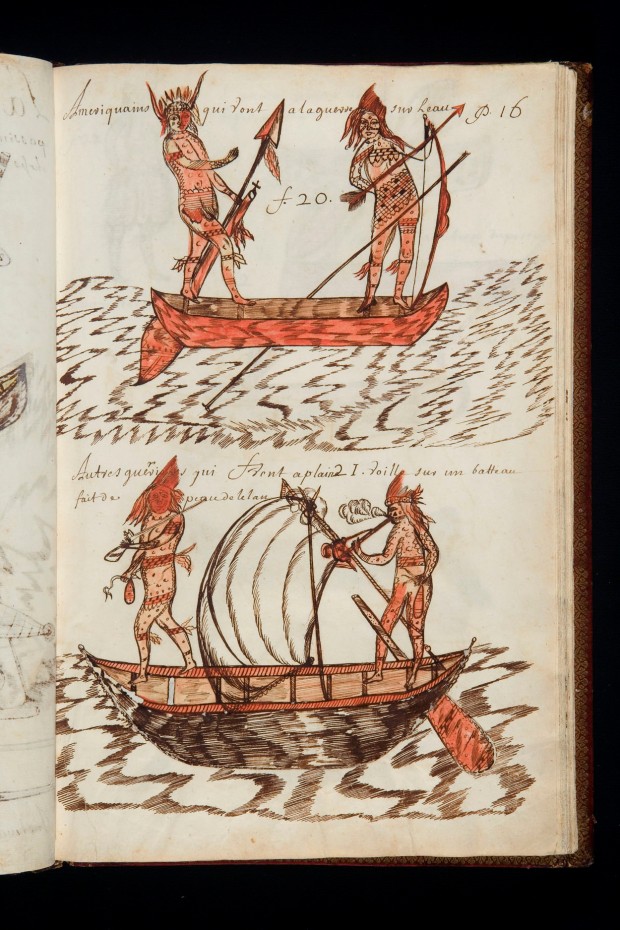
An interesting depiction of native sailing vessels, which you normally never hear about.
The Codex is an incredible compendium of indigenous life, with its sketches representing many different communities, from Algonquin to Iroquois, their dress, watercraft, cabins, and body decorations all wonderfully represented through Nicolas’ sketches. It is completely mind-blowing to know that such a record of this period exists.
I visited the Gilcrease Museum’s online resources, and the Library and Archives Canada, which has a digitized version of the Codex here. Oddly, all the images online are out of focus, low resolution images. However, if you manipulate the website address of each image by replacing the image number in the address bar with an X, you will get a high resolution version that allows a closer examination. I have done this to a select group of its pages, and I present these here for you to examine. Enjoy this amazing glimpse back in time!
UPDATE: Joesph from the Gilcrease Museum contacted me and provided this information for readers wishing to gain full access to the hi-res images of the Codex. Instructions are as follows:
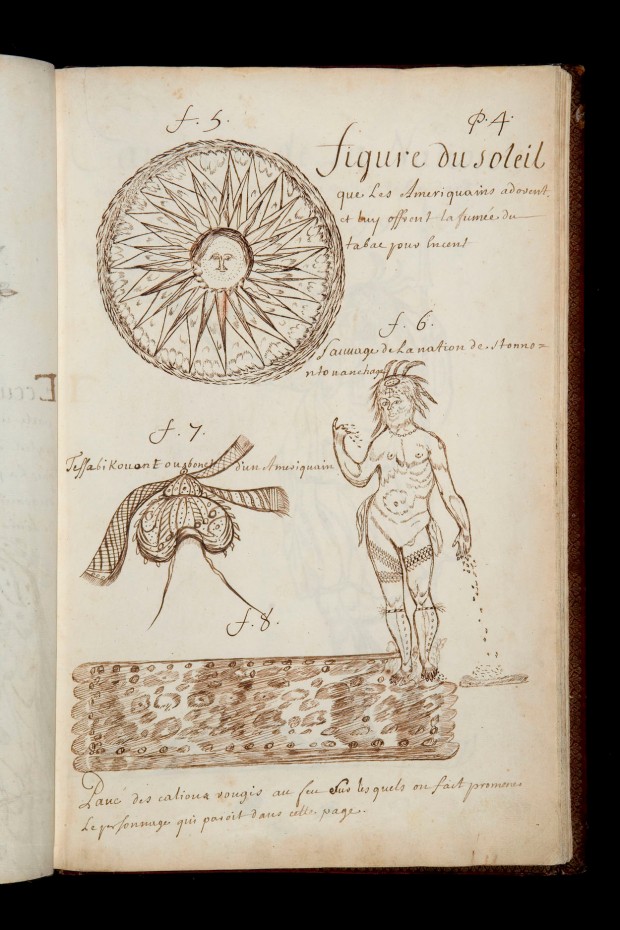
A sun diagram, with a native sowing seeds.
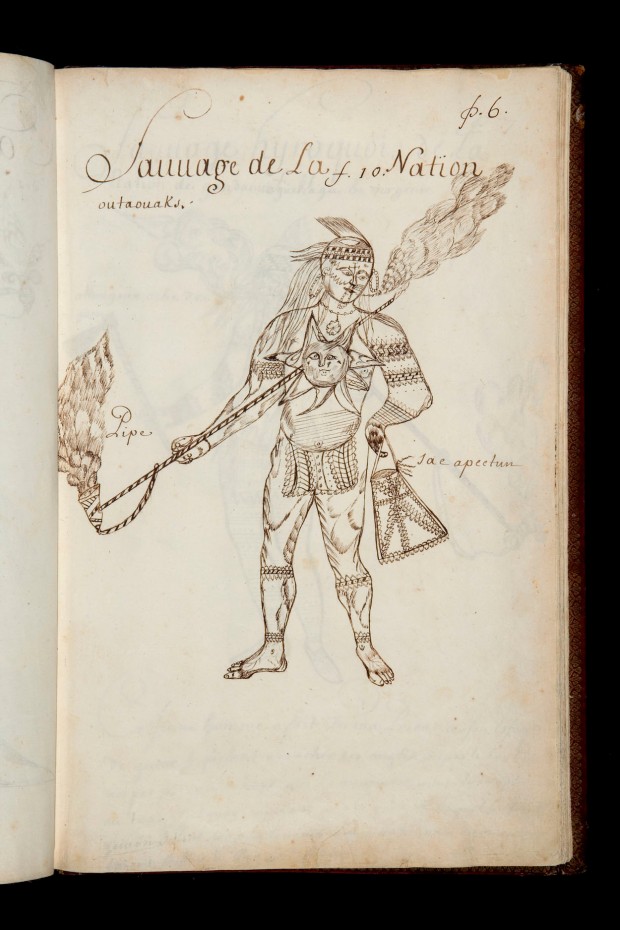
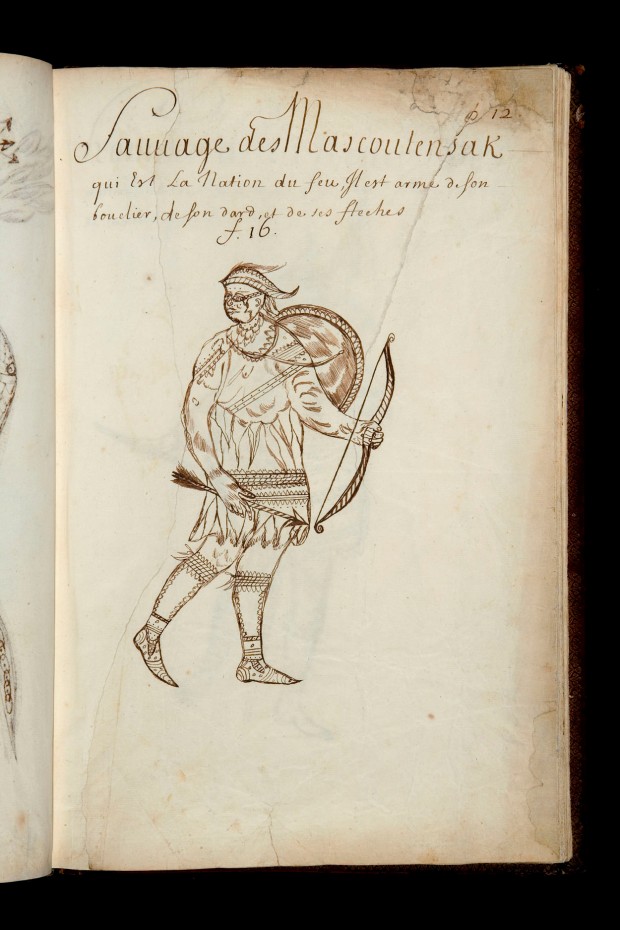
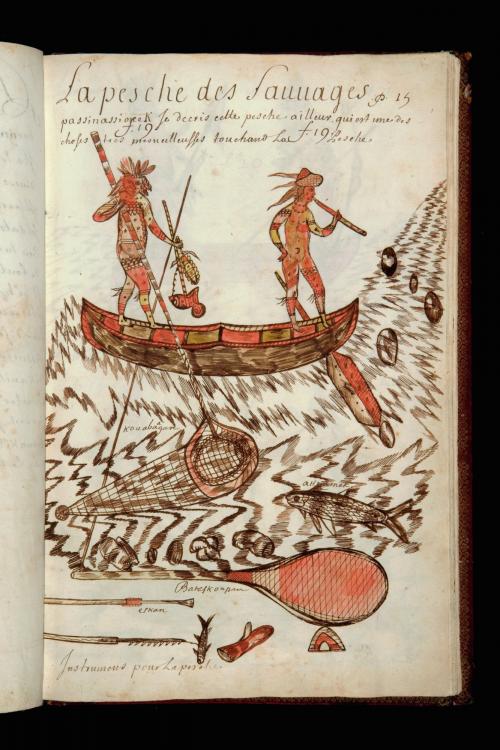
Native fishing practices.
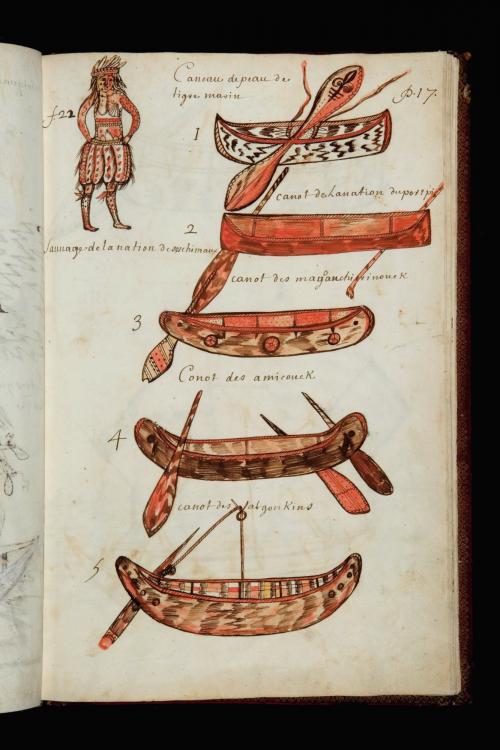
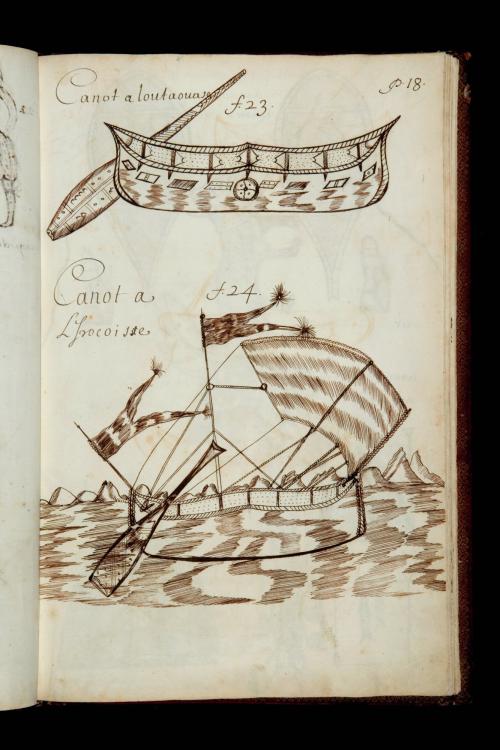
Sailing canoe!
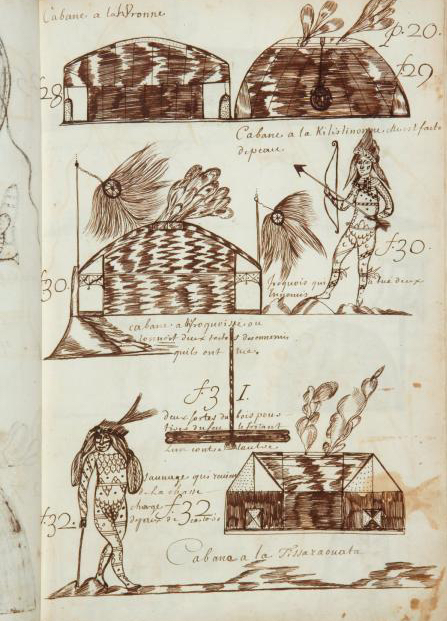
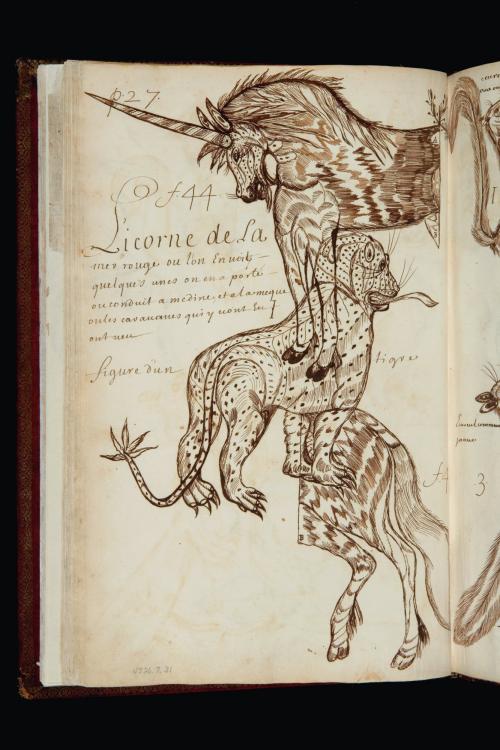
ummmmm. I guess we had unicorns in the 17th century here in Canada?
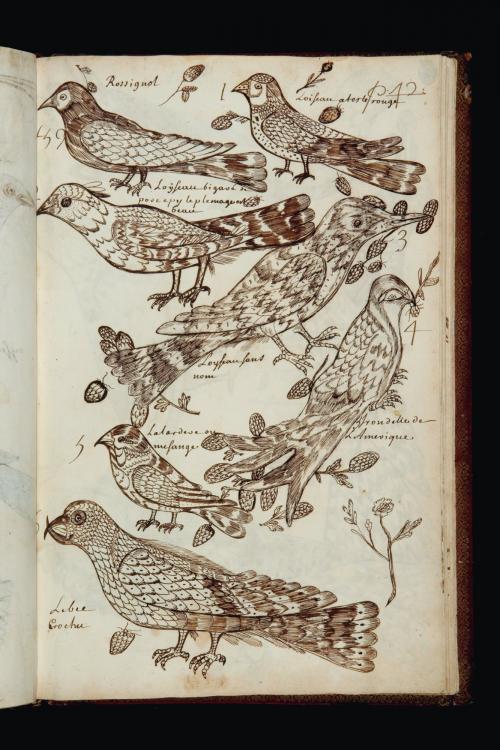
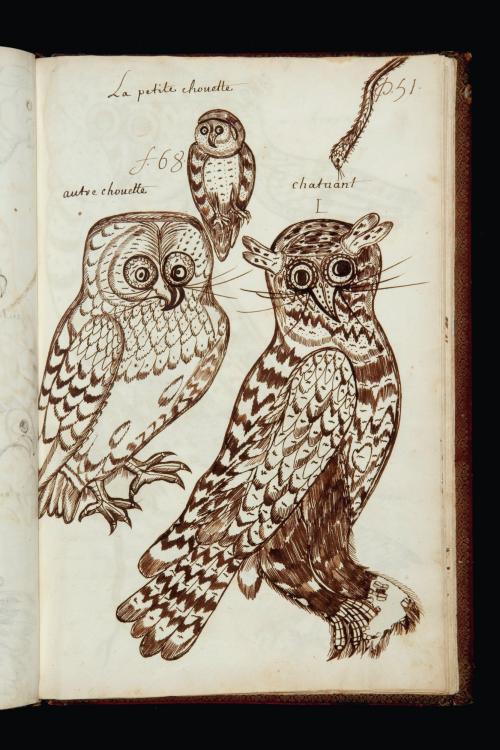
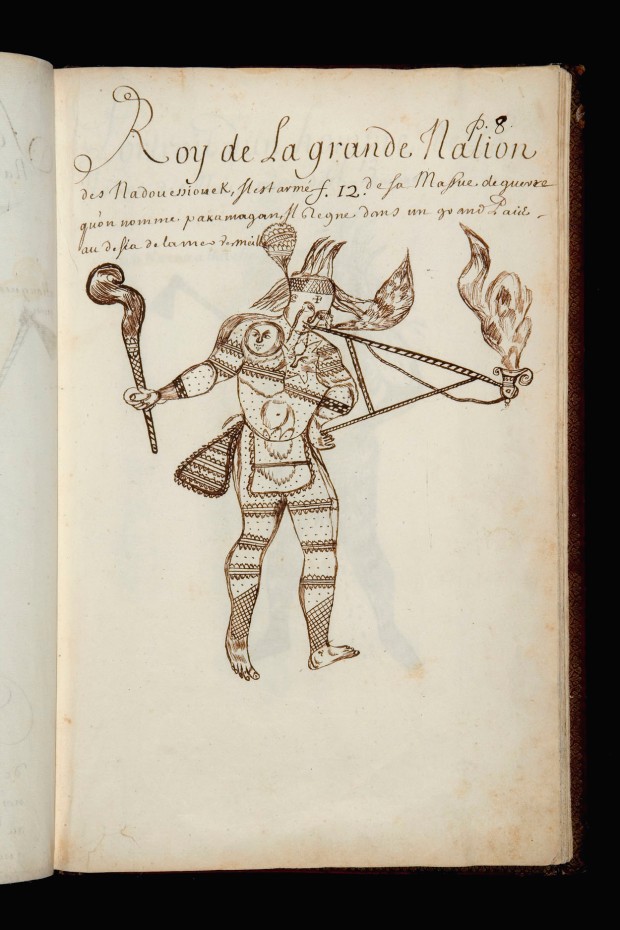
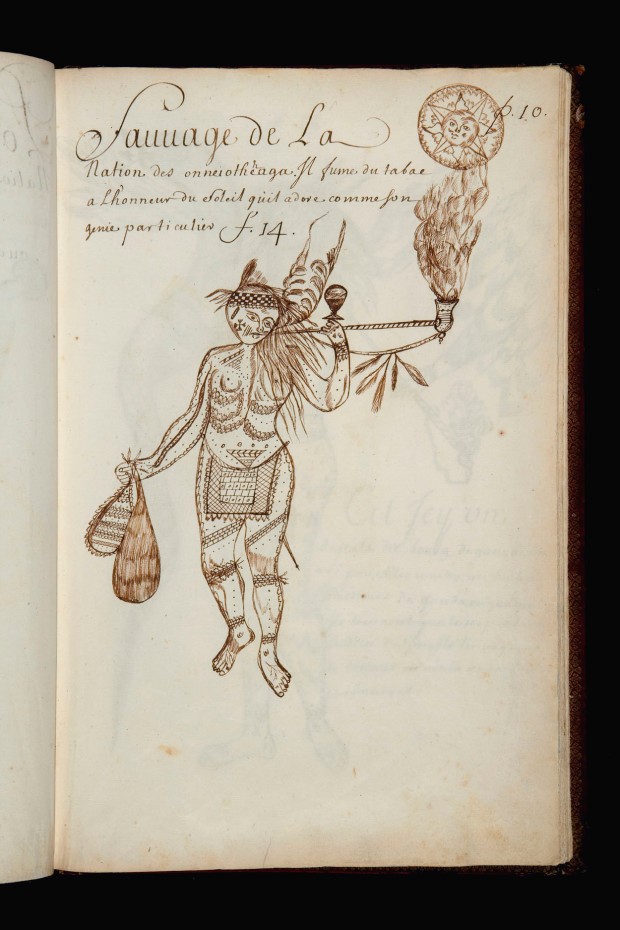
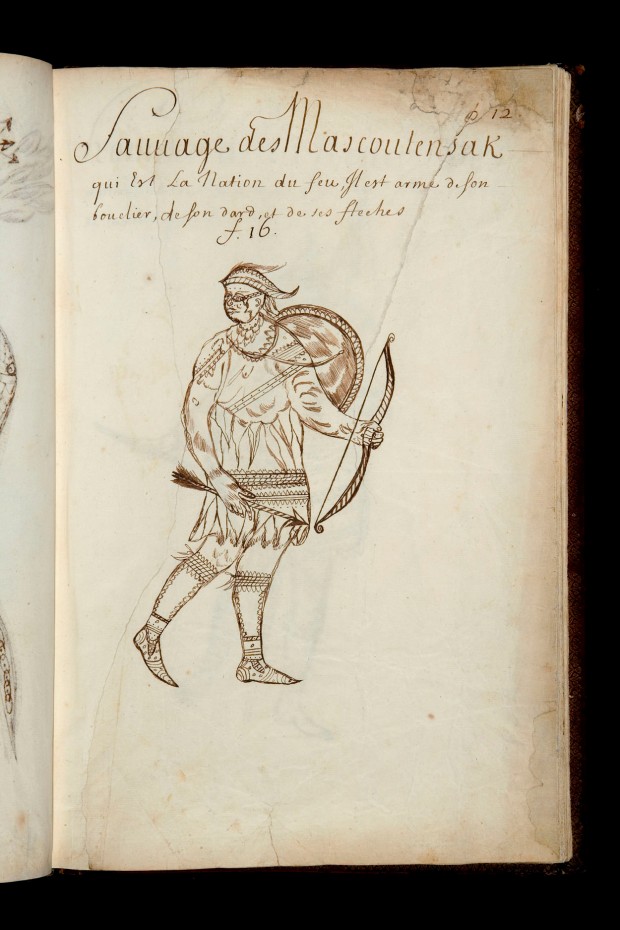
It is interesting to note that on all the images of the native people, there is a “cross” symbol marked on their heads…what would this be a representation of? The Jesuit cross? An indigenous symbol?
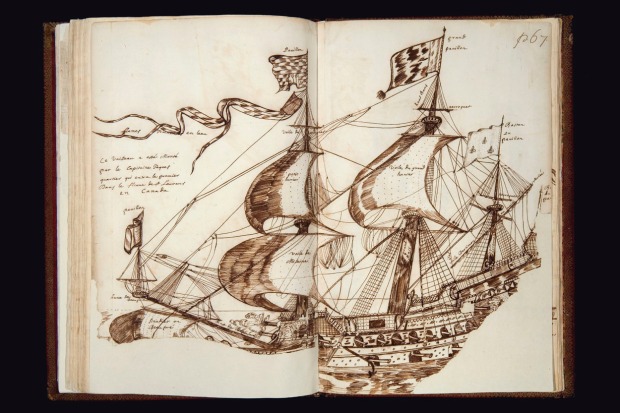
There’s even a drawing of Jacques Cartier’s ship that arrived in 1534!
Andrew King
August 2018
SOURCES:
Library and Archives Canada
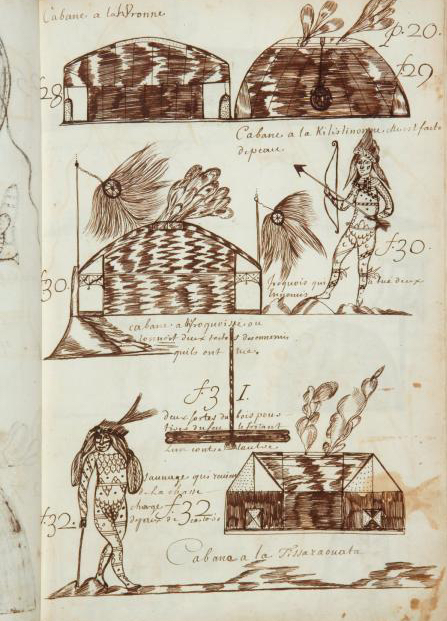




Do you honk the cross on their faces could actually be the hooked x from the knights templar?
It is hard to know exactly what those cross symbols represent, perhaps a native symbol, but its similarity to the Templar Knights cross is striking. There is a theory that the Templars arrived in Canada around 1400 and disperse3d into the country, perhaps integrating with the local natives, who adopted their symbol, but this is pure speculation.
Thank you for going to all the work to share these images.
I’m digging and downloading these sketches. A+
Thanks for reading!
Did you ask the Gilcrease how they acquired the document?
Mr. Gilcrease purchased the book from a book dealer in London in 1949, and kept it in his collection since then.
The graphics are approx 500×700. That is the large size scans
?
fascinating
This is so much history. We’ve learned much since then, thankfully, about the reality of settlement.
Very cool. Sorry for the silly questionjs, but can you provide more details on how to get the full size image?
For example:
What exactly am I replacing with X? “4726.7.007-v5.jpg”?
Thanks! Such a cool find!
Hi Francis! Thanks for reading…glad you enjoyed it. As for getting the larger image, replace the number at the end with an X…Eg. 4726.7.007-v5.jpg would be 4726.7.007-vX.jpg
Hi Andrew,
Thank you for the great article.
I just wanted to point out that you can download the whole set of images in one go at the Gilcrease site by following these steps:
1.Go to the object page: https://collections.gilcrease.org/object/47267
2.Select Download, just above the image (you will need to create a profile if you don’t have one).
3.Choose the option ‘Compressed archive (.ZIP)’ and click download.
These are 4000 pixel images on the longest side, but are downsized to 72dpi/ppi (so fairly similar to the ones you are finding using the method you described).
Hope this is helpful for people looking to download the whole set.
Kindest Regards,
Joseph (DBA at Gilcrease)
Hi Joseph,
Thanks for this updated information and taking the time to let readers know how they can access this remarkable piece of history.
On behalf of myself, and the readers, we appreciate your followup and full access to this document.
Kind Regards,
Andrew King